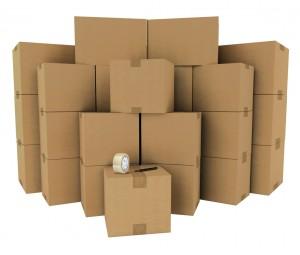Thinking outside the box can be the key to keeping up with demand
In popular mythology, shape shifting is a handy plot device that enables people or animals to transform themselves into completely different forms, usually with the help of a little magic. A human might turn into a dolphin or a bear or an evil wizard into a mouse either to escape an untimely end or vanquish an opponent.
In the world of consumer package goods (CPG), it’s not uncommon for products, packages and even packaging operations to shift shapes too. However, packaging products in different shapes, sizes, quantities, and boxes to keep up with shifts in demand or changing retailer and consumer requirements takes a bit more time, planning and resources.
So how do you shift shapes and scale your packaging operation to keep up with volume swings or surges in demand? The secret is understanding the impacts that packaging can have on your supply chain and knowing the different types of packaging operations and when to use them. In so doing, you’re better able to transform packaging from an afterthought into exciting waste-slaying, efficiency-driving, cost-saving opportunities.
The impact of packaging on the supply chain

Very few CPG, retail and high-tech supply chains are immune to the hazards of seasonality or volume swings. The extent to which these events stress a supply chain depends on its ability to flex and adapt, especially when it comes to packaging.
From a packaging perspective, responding to volatility requires a resilient operation that can respond when consumer demand spikes and still maintain constant levels of efficiency. When packaging becomes a bottleneck, it can be near-impossible to meet retailer and consumer demand in a timely or cost-effective manner.
Know the three “shapes” of packaging operations and when to use them
More and more consumer packaged goods manufacturers are turning assembly and packaging over to contract manufacturers – whether it’s to gain access to more capacity or capabilities they simply don’t have. Keep in mind, no two consumer packaged goods companies are alike, nor are their packaging requirements. Packaging operations come in three fundamental “shapes”, each of which impacts supply chains differently.
-
When to use contract manufacturing: don’t have the equipment or expertise you need to produce or package products in-house? Do you need geographically dispersed facilities to serve customers across the country? Have non-standard packaging that requires special machine or labor-intensive work or a short-term project that’s better served by specific experience or equipment you don’t have?
Outsource the entire process to a contract manufacturer to complete the job for you. A contract packaging partner provides final packaging and assembly, from procuring parts to packaging products into retail-ready formats.
-
When primary packaging makes sense: primary packaging is the stage of packaging that comes into immediate contact with the original product – it’s the first layer of packaging uses to contain a product and protect and preserve it. Many manufacturers outsource primary packaging to third parties that take unfinished products and transform them into retail-ready output.
Use primary packagers when you need extra packaging capacity to ramp up for new product launches or seasonal surges in demand. The use of primary packagers is usually driven by the need for additional capacity, not capabilities.
- When to use secondary packagers: want to reconfigure (yes, shape-shift) your finished product into another retail-ready package? Many retailers use secondary contract packagers to assemble and package products to merchandise them on retail shelves. Examples include Bag-in-box/bundle wrapping or custom displays.
Optimize your packaging operation and transform your supply chain
For years, packaging was little more than an afterthought. Today, it’s a different story. As fuel and transportation costs soar, packaging has morphed from something most supply chain professionals never thought about to a strategic link in the supply chain – and a very real opportunity to eliminate waste, reduce carbon impacts, slash transportation and distribution costs and respond better to consumer demand.
Whether it’s reducing over-packaging or distributing packaging closer to end users, it pays to optimize your packaging operation. This might mean:
- Moving packaging closer to customers
Rather than packaging products in one central location and shipping them across the country, it can be more efficient and cost-effective to package in several locations that are located closer to retailers/consumers. This is especially true if you’re distributing products on a nationwide basis. - Giving the supply chain team a voice
Too often, packaging decisions are made by marketing, manufacturing or R&D teams, without any input from the supply chain teams that will execute the decision. Not including supply chain experts can drive up the total landed cost because decisions may be based on incomplete or inaccurate information. - Postponing and going green
More and more companies are working with less inventory and re-tuning their supply chains to respond better to consumer demand. A key strategy is postponing packaging until just before products go to retailers to eliminate waste and maintain leaner inventories. Postponing packaging and often, product assembly, makes you more responsive to demand, lowers costs and minimizes environmental impact.
Can your consumer packaged goods supply chain – and packaging operation – flex to accommodate surges triggered by special promotions, seasonal spikes or new product launches? Learn how you can achieve a more flexible consumer packaged goods supply chain, but watching DC Velocity’s latest Move It video here.

